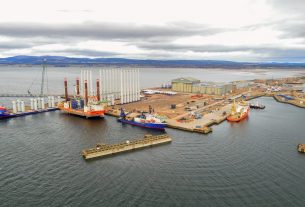United Kingdom – Prime Minister Boris Johnson has announced that new large-scale floating offshore wind ports and factories will be created in the UK as a result of government funding.
Developers and manufacturers interested in investing in this developing industry will be able to compete for a share of up to £160 million in new funding to jump start projects throughout the UK.
The newly earmarked cash will assist the Prime Minister’s Ten Point Plan aim of delivering 1GW of electricity through floating offshore wind by 2030 – approximately 9 times more than current volumes globally – as a stepping stone to significant further expansion in the UK of this technology.
Floating wind permits wind farms to be developed further out to sea in deeper waters, increasing energy capacity even more in areas where winds are greatest and ensuring the UK remains at the forefront of the next generation of renewable energy.
The £160 million, supplemented by private sector investment, is anticipated to construct port infrastructure capable of mass-producing and deploying floating offshore wind turbines at sea, creating thousands of new employment in the UK’s industrial heartlands while eliminating the need to import from outside.
Scotland’s offshore wind potential
Making the most of the deep waters off the Scottish coast provides enormous prospects for Scotland’s coastal towns, building on the country’s leadership as an offshore wind technology base, which includes two of the world’s first floating offshore wind farms off the coast of Aberdeen. With a combination of deep waters and strong winds, the Celtic Sea is also a major development opportunity for the offshore wind sector, and it is set to create significant opportunities for development in Wales, creating a new economic cluster that builds on the country’s strong industrial heritage.
The additional funding follows the success of the UK Government’s £160 million scheme to modernize ports and infrastructure for the conventional offshore wind industry, which has attracted over £1.5 billion in investment, including new offshore wind terminals in Teesside and the Humber.
Earlier this year, the government also launched the largest-ever round of the flagship Contracts for Difference scheme, aimed at advancing low-carbon electricity generation, with £200 million allocated to offshore wind projects and £24 million allocated to floating offshore wind.




